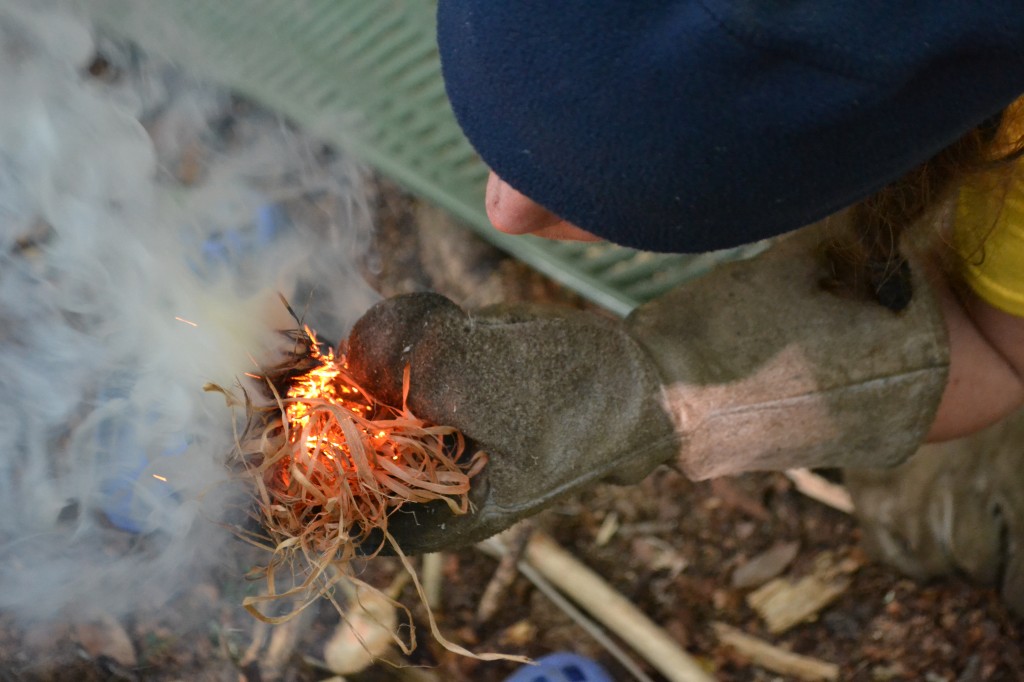July 09, 2014
Busting As Therapy

I remember a quote once made by a student that goes, “Busting isn’t therapy, it just pisses me off!” No finer words could be said about the therapeutic value of busting and the opportunities for growth that this skill can teach our students while at Second Nature.
What is Busting?
“Busting” is the term we use in the field to refer to the process of using a bow drill set to create fire. The technique has been used by native peoples in the southwest for thousands of years, and is a technique that we teach students today in the field. To “bust a flame,” the students muse use a top-rock, spindle, fireboard, and a bow together to create an ember. The ember ignites in the fine sawdust ground up by the spindle being spun by the bow into the fireboard, which is pushed together by down-pressure on the top-rock.
Once an ember has been created, it is carefully placed in a nest. Usually made from juniper bark, the nest is where the ember can grow. With a little help by blowing gently on the ember, it begins to burn into the dry nesting, and will eventually become a flame.
When the nest has caught fire, the students can use small twigs to create the group fire. When it has been stoked large enough, the fire can provide heat for cooking meals, light to see at night, and in winter serve as an external source of heat and comfort.
The Struggle of Busting
When students transition from Earth Phase to Fire Phase they are presented with a busting set from the group, and oftentimes take their first spins that very day. Busting does not come easily to most students, and it takes time to perfect one’s technique. It can take students weeks of practice to finally be able to bust an ember. When this occurs the student usually isn’t expecting it.
While busting they are expecting the same thing to happen as before, which is nothing. They may even be expecting to be disappointed, which reinforces their beliefs that busting is too hard and that they will never get an ember. However, when they do see an ember glowing in their fireboard, an instant change happens. They get animated, excited, and are scrambling to find a nest to blow the ember into flames (there is no sense in having a nest already made if you don’t expect get an ember).
Sometimes they blow too hard and actually blow the ember out. This only adds to the struggle and frustration of busting.
The Therapeutic Value of Busting
So much can be learned from how a student experiences busting! Some questions that can come up…
· How does the student deal with a challenge?
· Can he/she properly maintain a set?
· Does the student take care not to lose their set?
· What does the student do when he/she doesn’t get the instant gratification?
I have seen students who show no upset with any other challenges at Second Nature except for busting; students have smashed their bows on the ground in frustration and tossed their top-rocks, yelling and swearing at the top of their lungs. Others will avoid busting if at all possible, and will use excuses such as wanting to p-time to “work on their therapy.” All of these and more can be invaluably useful information to the therapists.
Busting, like so many things at Second Nature, is hard. But it is what the students learn from doing something difficult that has lasting value. I still feel a sense of pride for a student who thought they couldn’t bust get their first flame. Also, when returning to the group after a week off, having the pleasant surprise of finding out a student busted enough fires to get their headlamp. You can see the pride in their faces, because they know that they have earned it.
